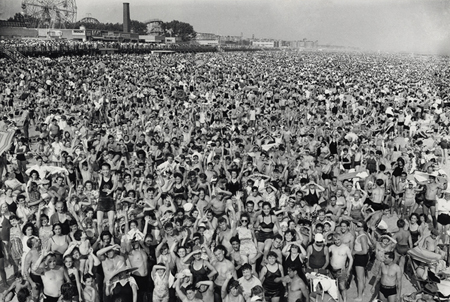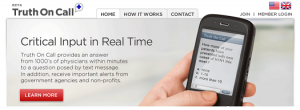TREND: Mobile Crowdsourcing - Using Humans as Sensors

Ever since the dawn of web, businesses, researchers, and even artists have been experimenting with crowdsourcing. Tapping the wisdom of the crowds is not just a smart PR and CRM strategy, it's a much more efficient way to collect information. Sentiment analysis, Aardvark's human search engine, and Victor & Spoils are all examples.
Mobile opens up a new angle on crowdsourcing, one that takes on a more stealth approach. While social media thrives on active participation, powerful data is being collected via our mobile devices while we, for the most part, remain unaware. Around the clock, our phones are collecting real-world information, mapping social processes, and transforming us into human sensors.
We naturally navigate the world using five key senses: sight, hearing, taste, touch, and smell. With these we construct the realm we live in. In the past, people have discussed ways to integrate these with computers, or build on them using technology. You could say that this is already happening. The current iPhone has about ten sensors including GPS, a compass, microphone, and camera. Smart phones can collect and process the data we are sensing 24/7, even measure the impact of ads we see and hear. With a guided purpose, businesses are using this to observe and innovate while we passively contribute information from our traveling selves.

We've covered Sense Network's Citysense, a startup that uses points of GPS and WiFi positioning data to view San Francisco's live activity and hotspots. After a quick download, data is collected automatically without need for further user action. With this it is possible to view what days of the week are busier, what venues are crowded, and where everybody is going from your current location. (While companies like Foursquare and Buzzd are beginning to provide these popularity contests as well, they are based on active check-ins.) Cartogrammar takes users' photos to paint Harvard Square based on dominant colors of geo-tagged Flickr photos. This passive crowdsourcing is much like sentiment analysis, which takes the pulse of web users by translating expressed emotion into hard data.
As with Citysense, mapping is natural application of this. Companies like Waze, Google, and Biketastic are crowdsourcing the actual creation of real-time traffic reports. Using previous speed and direction data, collected via mobile, Waze can predict future highway buildup and explain unusual situations.
This new forecasting and mapping is also applied to crowd flow through retail and other indoor locations by Sense Networks and Path Intelligence. The latter sets up receivers across a specified area that catch the frequencies sent out as mobile phones ping their towers. With this, they can observe movement through a building, saw a mall for example. This has powerful implications for everything from architecture and urban planning to advertising and marketing.
With data coming in every second of every day, our modern society now has a real-time pulse to be monitored. Like weather forecasters, employees at companies like Path Intelligence are able to use this to predict the future as well as act on alerts and unusual occurrences.
Of course, all of this might spook consumers just a bit. A recent report from Berkeley and UPenn showed that between 73 percent and 86 percent of adults opposes tailored advertising when they found out how it was done. Those techniques include tracking behavior on websites and in retail stores.
Considering this data is all anonymous and not tied to user profiles, that should quell concerns some. But expect to see much ado about this practice in coming years, as well as many more mind-blowing applications of it.








